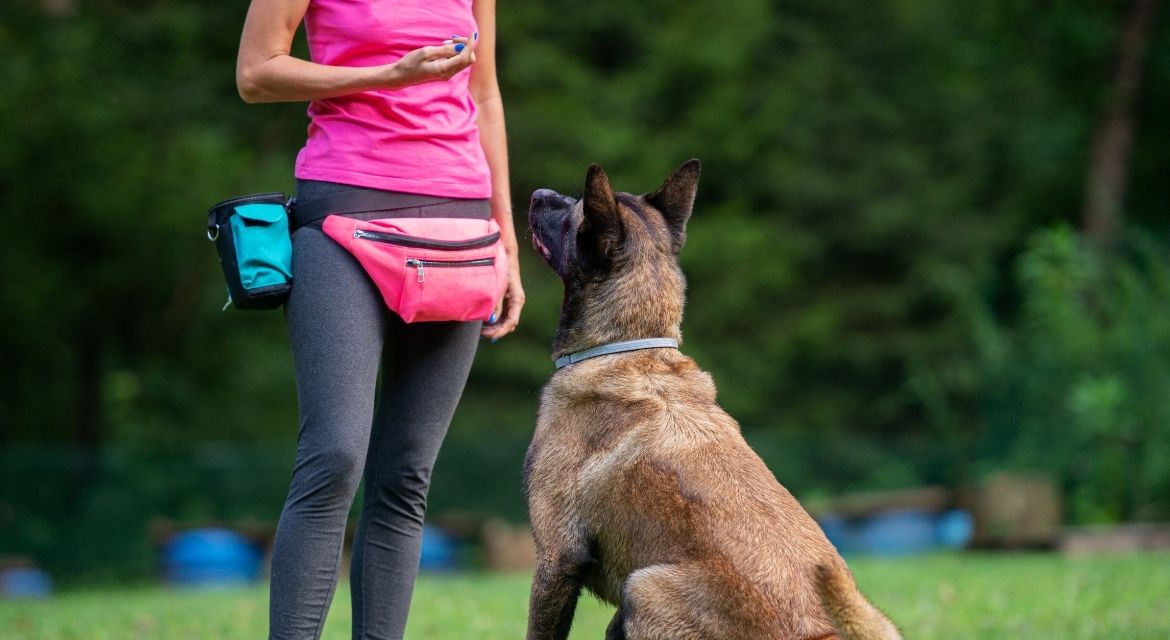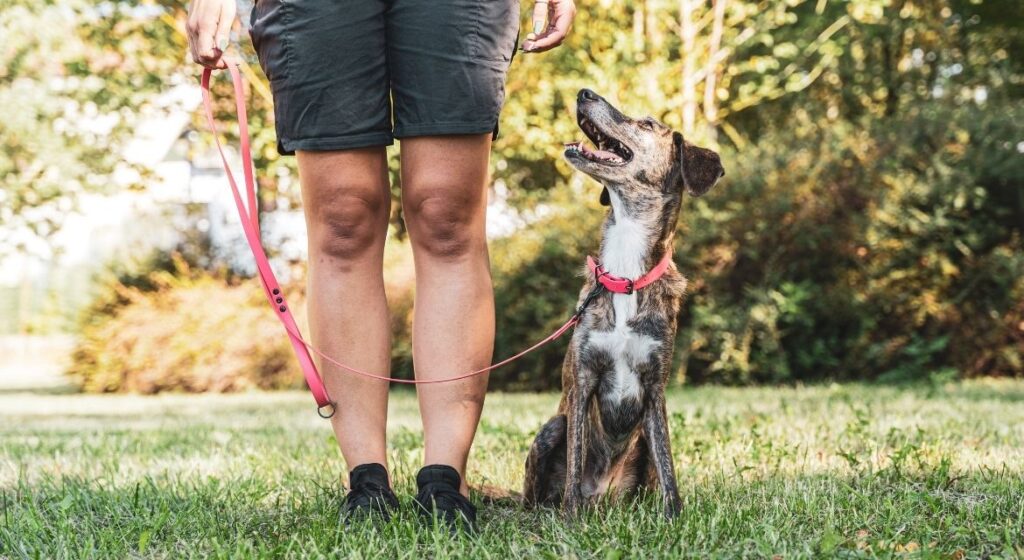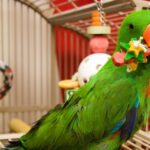 17 May
17 May10 Essential Dog Training Tips Every New Puppy Owner Should Know
Table of Contents
Introduction: Setting the Foundation for Successful Dog Training
Bringing home a new puppy is one of life’s most exciting experiences. Those tiny paws, wagging tail, and playful demeanor can instantly fill your home with joy and energy. However, along with the cuddles and adorable moments comes the responsibility of proper training. Effective dog training tips aren’t just about teaching tricks they’re about creating a foundation for a harmonious relationship that will last for years to come.
Without proper guidance and consistent dog training tips implemented from day one, puppies can quickly develop problematic behaviors that become increasingly difficult to correct as they mature. Jumping on guests, excessive barking, destructive chewing, and poor leash manners are just a few examples of behaviors that can transform your adorable puppy into a challenging companion. This is why implementing effective dog training tips early is critical to your success as a pet parent.
Every interaction with your puppy is a training opportunity. The dog training tips we’ll cover create more than just good behavior they foster communication, build trust, and establish you as a confident, consistent leader in your dog’s eyes. When your puppy understands what’s expected, they feel secure and can thrive in your home environment.
Research consistently shows that dogs trained with positive, reward-based dog training tips are more confident, less prone to behavior problems, and form stronger bonds with their owners. By investing time in training now, you’re creating a well-behaved companion who can accompany you to more places and participate fully in family life, enhancing both your lives immeasurably.
Understanding Puppy Development: The Foundation of Effective Dog Training Tips
Key Developmental Stages and Their Impact on Training
Puppies develop at an astonishing rate, and understanding these stages is crucial for implementing effective dog training tips. The first 16 weeks of a puppy’s life represent a critical socialization period when they’re most receptive to new experiences and learning. During this window, puppies form impressions that can last a lifetime, making it the perfect time to introduce fundamental dog training tips.
From birth to 8 weeks, puppies learn basic social skills from their mother and littermates. They discover bite inhibition how hard is too hard when playing and begin to understand canine communication. When you bring your puppy home (ideally at 8-10 weeks), they enter what trainers call the “fear imprint period,” typically occurring between 8-11 weeks. During this stage, any frightening experiences can have lasting effects, so your dog training tips should focus on gentle, positive introductions to new situations.
Between 12-16 weeks, puppies experience a second fear period while simultaneously becoming more independent. This is when consistent implementation of dog training tips becomes crucial especially commands like “come” and “stay” that can keep them safe as they begin to explore. By 16 weeks, your puppy’s brain has developed significantly, making this the prime time to establish solid training foundations before adolescence begins at around 6 months.
Adolescence (6-18 months depending on breed) brings new challenges as hormones influence behavior. During this time, your previously well-behaved puppy may test boundaries. Continuing to apply consistent dog training tips during this phase reinforces expectations and helps weather this sometimes turbulent period.
Setting Realistic Expectations for Your Puppy’s Learning Curve
One of the most important dog training tips is to adjust your expectations to match your puppy’s developmental stage. Just as children learn at different rates, puppies also have individual learning curves that depend on breed, temperament, and prior experiences.
Small breeds like Pomeranians or Chihuahuas may gain bladder control earlier than larger breeds, affecting housetraining timelines. Working breeds such as Border Collies or German Shepherds may grasp commands more quickly but might become bored and destructive without adequate mental stimulation. Understanding your breed’s characteristics can help you tailor dog training tips to their specific needs.
Most puppies can learn basic commands like “sit” within a few days of consistent practice, but reliable responses under distraction take much longer. For instance, your puppy might sit perfectly in your quiet living room but completely ignore the command at a busy park. This doesn’t mean your dog training tips aren’t working it simply indicates that you need to gradually increase environmental challenges as your puppy masters each level.
Remember that puppies have short attention spans. Effective dog training tips suggest keeping sessions brief (3-5 minutes) but frequent (several times daily) for optimal learning. Celebrate small victories along the way, whether it’s a successful potty trip outside or maintaining a “stay” for a few seconds longer than before.
Creating a Consistent Routine: The Backbone of Dog Training Tips
Consistency ranks among the most powerful dog training tips for new puppy owners. Dogs thrive on predictability, which creates security and clear expectations. Establishing regular times for meals, potty breaks, training sessions, play, and sleep helps your puppy understand the household rhythm and reduces anxiety-related behaviors.
A typical puppy routine might include:
- Early morning potty break (immediately after waking)
- Breakfast and short training session
- Mid-morning potty break and playtime
- Late morning nap
- Lunchtime meal and potty break
- Afternoon short training session and environmental enrichment
- Evening meal, potty break, and calm playtime
- Final evening potty trip before bedtime
This structured approach supports many essential dog training tips by creating natural opportunities for reinforcement throughout the day. For example, asking your puppy to sit before meals teaches impulse control, while regular potty trips support housetraining success.
Consistency also extends to verbal cues and hand signals. Choose specific words for commands and ensure everyone in the household uses the same terminology. “Come,” “here,” and “let’s go” might seem interchangeable to humans, but they can confuse a puppy learning language. Select one command per desired behavior and stick with it this simple strategy ranks among the most underrated dog training tips for clear communication.
Positive Reinforcement: The Gold Standard in Dog Training Tips
The Science Behind Reward-Based Training Methods
Modern dog training tips overwhelmingly favor positive reinforcement methods based on decades of scientific research. Studies consistently show that reward-based training creates faster learning, better retention, and stronger human-animal bonds compared to punishment-based approaches.
The core principle behind this effective approach is simple: behaviors that are rewarded tend to be repeated. When your puppy receives something pleasurable immediately after performing a desired action, their brain creates a positive association with that behavior. This neurological connection motivates them to repeat the action in hopes of earning another reward.
Renowned veterinary behaviorists and trainers have documented that positive dog training tips not only produce well-behaved pets but also more confident, emotionally stable companions. Research from the University of Bristol found that dogs trained using primarily reward-based methods showed fewer problem behaviors and displayed higher levels of obedience than those trained with aversive techniques.
Understanding the difference between primary and secondary reinforcers can enhance your dog training tips toolkit. Primary reinforcers like treats have inherent value to dogs, while secondary reinforcers (clickers, verbal praise) gain value through association with primary rewards. Eventually, your satisfied “Good dog!” becomes rewarding by itself, though occasional food rewards help maintain reliable behaviors long-term.
Choosing Effective Rewards: Treats, Praise, and Play in Your Dog Training Tips Arsenal
The most successful dog training tips emphasize finding rewards that genuinely motivate your individual puppy. While commercial treats work well for many dogs, others might respond better to praise, petting, or the opportunity to play with a favorite toy.
For food-motivated puppies, consider these treat-related dog training tips:
- Use small, soft treats that can be consumed quickly without disrupting training flow
- Reserve special “high-value” treats (like tiny pieces of chicken or cheese) for challenging environments or new skills
- Consider your puppy’s daily caloric intake training treats should constitute no more than 10% of their diet
- For puppies with food sensitivities, use portions of their regular kibble as rewards during mealtime training
For puppies less motivated by food, incorporate these alternative dog training tips:
- Experiment with different toys to find what excites your puppy most some prefer plush squeaky toys while others go wild for tennis balls
- Use brief play sessions as rewards ten seconds of tug after a successful “drop it” reinforces both commands
- Learn your puppy’s preferred petting style some enjoy chest scratches while others prefer base-of-tail rubs
- Use excited praise in a high-pitched voice, which many dogs find naturally rewarding
The best dog training tips suggest varying rewards to prevent boredom and strengthen behaviors under different circumstances. This “variable reinforcement schedule” actually creates more persistent behaviors than predictable rewards.
Timing and Frequency: Critical Elements of Effective Dog Training Tips
Even perfect rewards lose effectiveness with poor timing. Among the most crucial dog training tips is to mark desired behaviors the instant they occur. The narrow window for effective reinforcement is just 1-2 seconds any longer and your puppy may associate the reward with a different behavior entirely.
For example, if you’re teaching “sit” and reward your puppy after they’ve already stood back up, you’ve accidentally reinforced standing rather than sitting. This common timing mistake can significantly slow training progress.
Many professional trainers incorporate a marker signal into their dog training tips a word like “Yes!” or a clicker sound that precisely marks the moment of correct behavior. This signal bridges the gap between the behavior and the treat delivery, communicating exactly what action earned the reward.
As for frequency, effective dog training tips recommend continuous reinforcement (rewarding every correct response) when teaching new behaviors. Once your puppy reliably performs the behavior, gradually transition to intermittent reinforcement rewarding randomly rather than predictably. This approach, drawn from behavioral science, creates more durable behaviors that persist even when rewards aren’t always forthcoming.
During the transition from continuous to intermittent reinforcement, incorporate these dog training tips:
- Initially reward every other correct response
- Then reward approximately every third response
- Eventually move to a truly random pattern, sometimes rewarding several times in succession, other times waiting for multiple correct responses
- Always maintain enthusiastic verbal praise even when food rewards aren’t given
Housetraining Success: Essential Dog Training Tips for Potty Training
Creating a Foolproof Potty Schedule
Successful housetraining relies on prevention and timely reinforcement, making it one of the areas where consistent dog training tips yield the fastest results. Puppies have limited bladder control generally they can “hold it” for about one hour per month of age plus one. This means a three-month-old puppy needs potty breaks approximately every four hours, even overnight.
Effective housetraining dog training tips start with establishing a strict schedule. Take your puppy outside:
- Immediately after waking (morning and from naps)
- Within 15 minutes after meals
- After play sessions
- Before bedtime
- At least once during the night for puppies under 4 months
- Generally every 1-2 hours when awake for young puppies
Additionally, watch for warning signs that your puppy needs to eliminate circling, sniffing, whining, or suddenly leaving a play session. These behaviors should trigger immediate implementation of your potty-related dog training tips, specifically a quick trip outside.
When outside, take your puppy to the same spot each time. The lingering scent helps them understand the purpose of the outing. Use a consistent command like “Go potty” or “Do your business” right before elimination to create a cue you can use later in different environments one of the more advanced dog training tips that helps when traveling with your pet.
Crate Training: A Valuable Tool in Your Dog Training Tips Arsenal
Crate training serves multiple purposes in puppy development, with housetraining being among the most significant. Dogs naturally avoid soiling their sleeping areas, making a properly-sized crate an excellent management tool when you can’t directly supervise your puppy.
When implementing crate-related dog training tips, select a crate that’s just large enough for your puppy to stand up, turn around, and lie down comfortably. If you have a large-breed puppy, consider a crate with a divider that can expand as they grow. Too much extra space might tempt them to eliminate in one corner and sleep in another, undermining your housetraining efforts.
Introduce the crate gradually, following these dog training tips:
- Make the crate inviting with comfortable bedding and toys
- Feed meals near, then inside the crate
- Practice brief closed-door sessions while you remain nearby
- Gradually extend crate time, always providing appropriate exercise and potty breaks
- Never use the crate for punishment it should remain a positive space
While the crate is a valuable training tool, effective dog training tips caution against overuse. Young puppies should spend no more than 2-3 hours at a time in a crate during the day (except when sleeping), as excessive confinement can lead to anxiety or depression.
Accident Management: Constructive Dog Training Tips for Inevitable Mistakes
Despite your best efforts, accidents will happen. How you respond forms critical learning moments, making these dog training tips particularly important. If you catch your puppy in the act of eliminating indoors:
- Make a brief interruptive sound (not scary, just enough to pause the action)
- Quickly but calmly take them outside to their designated spot
- Wait for them to finish, then praise enthusiastically and reward
- Clean the indoor accident thoroughly with an enzymatic cleaner designed for pet messes
More important than addressing accidents are these preventive dog training tips:
- If accidents increase suddenly, consult your veterinarian to rule out urinary tract infections or other health issues
- Maintain vigilant supervision use baby gates or a leash attached to your belt when necessary
- Return to more frequent potty breaks if your puppy seems to be struggling with the current schedule
- Recognize that setbacks often occur during developmental transitions or after changes in routine
Remember that punishment for accidents is counterproductive and violates modern dog training tips. Punishing a puppy for eliminating indoors often teaches them to hide from you when they need to go, making housetraining much more difficult. Instead, focus on reinforcing desired behaviors and preventing opportunities for mistakes.

Socialization: Critical Dog Training Tips for a Well-Adjusted Companion
The Science of Socialization: Why It’s Among the Most Important Dog Training Tips
Socialization refers to the process of exposing puppies to a wide variety of people, animals, environments, sounds, and experiences in a positive, controlled manner. Research conclusively demonstrates that well-socialized puppies develop into more confident, less fearful adult dogs with fewer behavioral problems.
The critical socialization window closes around 16 weeks of age, making early, positive exposure one of the most time-sensitive dog training tips. During this period, puppies are naturally curious and resilient, typically bouncing back quickly from mildly startling experiences. After this window closes, new situations are more likely to trigger fear responses that can be difficult to modify.
Well-respected studies show that puppies with limited socialization during this critical period are significantly more likely to develop behavior problems like fear aggression, general anxiety, and excessive reactivity to normal stimuli. For this reason, veterinary behaviorists and trainers emphasize socialization as among the most crucial dog training tips, even for puppies who haven’t completed their vaccination series (with precautions taken to minimize disease exposure).
Creating Positive Socialization Experiences: Strategic Dog Training Tips
Effective socialization isn’t about random exposure it’s about creating controlled, positive associations with new experiences. These dog training tips help make socialization successful:
- Use high-value treats to create positive associations with new experiences
- Start with mild exposures and gradually increase intensity
- Watch your puppy’s body language and respect their comfort level
- Allow your puppy to approach new things at their own pace when possible
- Pair potentially frightening stimuli (like vacuum cleaners) with distance and treats before gradual exposure
A comprehensive socialization plan should include these categories, with specific dog training tips for each:
People Socialization:
- People of different ages, including gentle children and seniors
- People wearing unusual items: hats, sunglasses, uniforms, backpacks
- People using mobility equipment: wheelchairs, canes, walkers
- People of different ethnicities and genders
Environmental Socialization:
- Various flooring surfaces: tile, carpet, wood, grass, concrete
- Weather conditions: rain, snow, wind (as seasonally appropriate)
- Different locations: parks, pet stores, friends’ homes, outdoor cafes
- Car rides of increasing duration
Sound Socialization:
- Household appliances: vacuum cleaners, blenders, washing machines
- Environmental sounds: thunder, fireworks, construction noise
- Traffic sounds: cars, motorcycles, emergency vehicles
- Recordings of these sounds can be played at low volume initially
Animal Socialization:
- Well-vaccinated, puppy-friendly adult dogs
- Puppies of similar vaccination status and play style
- Other household pets like cats (with careful supervision)
- Livestock or other animals they might encounter in your lifestyle
Puppy Classes: Professional Dog Training Tips in a Social Setting
Structured puppy socialization classes offer tremendous value, combining expert dog training tips with controlled socialization opportunities. These classes typically accept puppies after their first round of vaccinations (around 8-10 weeks) and provide a safe environment for puppies to interact with age-appropriate playmates under professional supervision.
Quality puppy classes offer more than play they provide structured learning opportunities and professional dog training tips customized to your puppy’s needs. Trainers can identify early warning signs of potential behavior problems and suggest interventions before issues become entrenched.
When selecting a puppy class, look for these hallmarks of quality dog training tips and methods:
- Small class sizes (ideally 6-8 puppies maximum)
- Requirements for age-appropriate vaccinations
- Clean facilities with sanitized surfaces
- Positive reinforcement methods exclusively
- Structured activities beyond free play
- Take-home materials with dog training tips to practice
Many veterinary behaviorists consider puppy classes so valuable that they rank among their top dog training tips for all new puppy owners, regardless of prior dog experience. The combination of expert guidance, peer learning, and socialization opportunities creates a foundation for lifelong good behavior that’s difficult to replicate through independent training alone.
Basic Commands: Essential Dog Training Tips for Everyday Life
Starting with Success: Teaching the Five Core Commands
While fancy tricks can be entertaining, mastering these five fundamental commands should be the priority in your dog training tips toolkit. These commands form the foundation of good canine citizenship and can even save your dog’s life in dangerous situations.
Sit: Often the first command taught in puppy training, “sit” teaches impulse control and creates a default behavior for greetings.
- Hold a treat close to your puppy’s nose
- Move your hand up, causing their head to follow and bottom to lower
- The moment they sit, mark with “Yes!” and reward
- Practice in different locations with gradually increasing distractions
Stay: This critical safety command teaches impulse control and patience.
- Ask your puppy to sit
- Open your palm facing them like a stop sign
- Say “Stay” in a clear, calm voice
- Wait just 1-2 seconds initially, then mark with “Yes!” and reward
- Gradually increase duration, then begin adding distance and distractions
Come: Potentially life-saving, a reliable recall ranks among the most valuable dog training tips.
- Start in a minimal-distraction environment
- Say your puppy’s name followed by “Come!” in an enthusiastic voice
- When they move toward you, mark with “Yes!” and reward generously when they arrive
- Never punish a dog who comes when called, even if they took their time
- Practice with a long line in safe, enclosed areas before attempting off-leash recalls
Leave It: This command prevents your puppy from picking up dangerous or undesirable items.
- Place a low-value treat in your closed fist
- When your puppy noses or paws at your hand, wait for them to stop
- The moment they pull back, mark with “Yes!” and reward with a DIFFERENT, higher-value treat
- Progress to placing the treat on the floor under your palm, then fully exposed
- Advanced dog training tips suggest practicing with increasingly tempting items
Down: Creates a relaxed position for longer stays and public outings.
- Start with your puppy in a sit position
- Hold a treat in front of their nose, then slowly move it straight down to the floor
- When they follow with their nose and lower their body, continue moving the treat slightly forward to encourage a full down position
- Mark with “Yes!” and reward immediately
Progressive Training: Advanced Dog Training Tips for Reliable Responses
Once your puppy understands basic commands in a quiet setting, effective dog training tips focus on building reliability through the “Three D’s”:
Duration: Gradually increase how long your puppy must hold a command.
- For “stay,” begin with 2 seconds, then 5, 10, 30, and eventually several minutes
- Increase duration in small increments seconds, not minutes
- If your puppy breaks position, return to a slightly shorter duration where they can succeed
Distance: Increase the space between you and your puppy while they maintain the command.
- For “stay,” start with you standing right in front, then one step back, two steps, etc.
- Return to reward in position initially, gradually working up to releasing from a distance
- If practicing “come,” begin with just a few feet, then gradually increase as reliability improves
Distraction: Systematically add challenges while maintaining the command.
- Begin with minimal distraction environments like a quiet room
- Progress to mild distractions like someone walking by
- Eventually practice with significant distractions like other dogs or outdoor environments
- Return to easier environments if your puppy struggles
Professional dog training tips emphasize that rushing this progression creates unreliable responses. Moving from 70% success in a quiet living room to 0% success at a busy dog park isn’t training it’s setting your puppy up to fail. Instead, aim for 90% reliability at each level before advancing.
Hand Signals: Non-Verbal Dog Training Tips for Enhanced Communication
Incorporating hand signals into your training creates multi-channel communication that can be invaluable in noisy environments or as your dog ages and may experience hearing loss. These non-verbal dog training tips create a richer communication system between you and your puppy:
- Sit: Raise your hand upward with palm facing up
- Stay: Open palm facing forward, like a “stop” signal
- Come: Arms open wide or hand brought toward your chest
- Down: Hand signal moving downward with palm facing down
- Leave it: Quick hand movement crossing in front of your puppy’s face
When teaching hand signals, these dog training tips ensure success:
- Initially pair the hand signal with the verbal cue
- After your puppy responds reliably to both together, occasionally use just the hand signal
- Reward heavily for responses to hand signals alone
- Practice both verbal and visual cues to maintain both communication channels
Managing and Preventing Behavioral Issues: Proactive Dog Training Tips
Understanding and Redirecting Natural Puppy Behaviors
Many behaviors owners find problematic are actually normal puppy development phases that can be managed with appropriate dog training tips. Rather than punishing natural behaviors, successful training redirects these instincts to appropriate outlets.
Mouthing and Nipping: Puppies explore their world with their mouths and play with littermates through gentle biting. These dog training tips help teach bite inhibition:
- When your puppy nips, make a high-pitched “ouch!” sound and briefly stop play
- Provide appropriate chew toys, especially during teething
- Redirect mouthy behavior to toys rather than hands or clothing
- If nipping persists, briefly leave the room removing attention is powerful
- Arrange puppy playdates where peers can teach bite inhibition through natural feedback
Chewing: Puppies chew to relieve teething discomfort and explore their environment. These dog training tips manage chewing constructively:
- Puppy-proof by removing valuable or dangerous items from reach
- Provide a variety of appropriate chew toys with different textures
- Rotate toys regularly to maintain interest
- Use bitter apple spray on furniture or immovable objects
- Catch and reward your puppy for chewing appropriate items
Jumping: Puppies jump to reach our faces for interaction, but this becomes problematic as they grow. Try these dog training tips:
- Completely ignore jumping no eye contact, touching, or speaking
- Wait for four paws on the floor, then calmly reward
- Teach and reward an incompatible behavior like “sit” for greetings
- Be consistent everyone must follow the same protocol
- Consider keeping your puppy on leash during greetings until habits improve
Energy Management: Essential Dog Training Tips for a Balanced Puppy
Many behavior problems stem from insufficient physical and mental exercise. Different breeds have vastly different energy requirements, making these dog training tips particularly important to customize to your puppy’s needs.
Physical Exercise Needs:
- Most puppies benefit from 5 minutes of structured exercise per month of age, twice daily
- Exercise should be appropriate for developing joints avoid excessive jumping or long runs
- Swimming provides excellent low-impact exercise for breeds prone to joint issues
- Structured walks with training elements incorporated provide both physical and mental stimulation
Mental Stimulation Strategies:
- Food puzzle toys make mealtimes into brain work
- Sniffing games tap into natural canine abilities
- Training sessions count as mental exercise
- Rotate toys to maintain novelty and interest
Structured Downtime:
- Teach a “place” command for calm settling on a designated bed
- Create a routine that includes quiet time after exercise
- Use enrichment toys like stuffed Kongs during downtime
- Reward calm behavior randomly throughout the day
A tired puppy is generally a well-behaved puppy, but effective dog training tips emphasize that overtired puppies often become hyperactive and mouthy. Learning to recognize fatigue and enforce nap times prevents many behavior issues in young puppies.
When to Seek Professional Help: Recognizing Limits of DIY Dog Training Tips
While many behavior challenges respond well to consistent application of basic dog training tips, some situations warrant professional intervention. Early assistance for complex issues can prevent problem behaviors from becoming entrenched patterns.
Consider professional help if:
- Your puppy shows fear or aggression toward people or other animals
- House training isn’t progressing despite consistent effort
- Your puppy demonstrates separation anxiety that doesn’t improve with basic protocols
- Resource guarding (growling or snapping over food, toys, or locations) occurs
- Any behavior problem significantly impacts your relationship with your puppy
When selecting professional help, look for trainers who:
- Use positive reinforcement methods aligned with modern dog training tips
- Hold certifications from respected organizations
- Welcome your observation of training sessions
- Can explain the science behind their methods
- Provide customized training plans rather than one-size-fits-all approaches
Conclusion: Implementing Dog Training Tips for Lifelong Success
Raising a well-behaved, confident dog requires commitment to consistent training throughout your puppy’s development. The dog training tips outlined here provide a comprehensive foundation that can be adapted to your specific puppy’s needs, breed characteristics, and your family lifestyle.
Remember that training is not a destination but a journey one that continues throughout your dog’s life. The early months establish patterns and communication systems that you’ll build upon for years. By implementing effective dog training tips from the beginning, you create a common language that strengthens your bond while preventing problem behaviors.
Patience, consistency, and positive reinforcement form the cornerstone of successful dog training tips. Celebrate small victories, forgive setbacks, and maintain a sense of humor along the way. The relationship you build through thoughtful training will reward you with a well-mannered companion who can safely enjoy greater freedom and more fully participate in your daily life.
Most importantly, enjoy this special time with your puppy. The training period, while sometimes challenging, offers unique opportunities to learn about your puppy’s personality, build trust, and establish patterns that will serve you both well for years to come. The dog training tips you implement today create the exceptional canine citizen of tomorrow.
You May Also Like :
How to Stop Dog Barking: The Complete Guide to a Quieter, Happier Pet
Comprehensive Guide to Interactive Cat Toys: Keeping Indoor Cats Happy and Healthy
Dog Grooming at Home: The Complete Guide for Dog Owners
10 Essential Dog Training Tips Every New Puppy Owner Should Know
How to Take Care of a Pet: Essential Guide to Responsible Pet Ownership
The Ultimate Guide to Cat Playtime: Why Play Is Essential for Your Feline’s Health and Happiness
How to Successfully Work from Home with Pets: A Comprehensive Guide
The Mental Health Benefits of Having a Dog: What Every Pet Owner Should Know
How to Groom a Puppy for the First Time: Step-by-Step Guide
Quick Solutions for Daily Pet Care: Simple Strategies for a Happier Pet and Easier Routine




